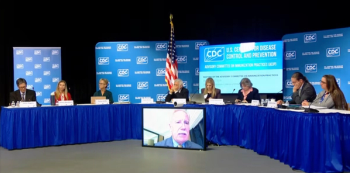
Decolonizing Carriers Can Prevent Recurrrent CA-MRSA Infections, Researchers Say
Yaseen Rafee, of the Division of Infectious Diseases at the Childrens Hospital of Michigan in Detroit, and colleagues, sought to measure methicillin-resistant Staphylococcus aureus (MRSA) nasal colonization prevalence in household contacts of children with current community associated (CA)-MRSA infections (study group) in comparison with a group of household contacts of children without suspected Staphylococcus aureus infection (a control group).
Â
Cultures of the anterior nares were taken, and relatedness of isolated strains was tested using pulse field gel electrophoresis (PFGE).
The researchers found that prevalence of MRSA colonization in the study group was significantly higher than in the control group (18/77 (23 percent) vs 3/77 (3.9 percent); p [less than or equal to] 0.001). The prevalence of SA colonization was 28/77 (36 percent) in the study group and 16/77 (21 percent) in the control group (p = 0.032). The prevalence of SA nasal colonization among patients was 6/24 (25 percent); one with methicillin-susceptible S. aureus (MSSA) and five with MRSA. In the study (patient) group, 14/24 (58 percent) families had at least one household member who was colonized with MRSA compared to 2/29 (6.9 percent) in the control group (p = 0.001). Of 69 total isolates tested by PFGE, 40 (58 percent) were related to USA300. Panton-Valetine leukocidin (PVL) genes were detected in 30/52 (58 percent) tested isolates. Among the families with [greater than or equal to] one contact colonized with MRSA, similar PFGE profiles were found between the index patient and a contact in 10/14 families.
The researchers conclude that prevalence of asymptomatic nasal carriage of MRSA is higher among household contacts of patients with CA-MRSA disease than control group. Decolonizing such carriers may help prevent recurrent CA-MRSA infections. Their research was published in
Reference: Rafee Y, et al. Increased prevalence of methicillin-resistant Staphylococcus aureus nasal colonization in household contacts of children with community acquired disease. BMC Infectious Diseases 2012, 12:45 doi:10.1186/1471-2334-12-45.
Newsletter
Stay prepared and protected with Infection Control Today's newsletter, delivering essential updates, best practices, and expert insights for infection preventionists.






